
Local runner bean landrace


On Tuesday 23rd May I spent a great few hours together with Eva Johansson and Annevi Sjöberg from Sweden in my 3 gardens. They were on a fact-finding mission in connection with the project ”Främja fleråriga grönsaker i svensk matförsörjning” (Promoting perennial vegetables in the Swedish food supply).
The project Främja fleråriga grönsaker i svensk matförsörjning is financed with funds from the Swedish Agency for Agriculture (Jordbruksverket) within the framework of the Swedish food strategy (den svenska livsmedelsstrategin). The project runs until Dec 2023. The Skillebyholm Foundation manages the project.
Jen from Nottingham in the UK was visiting this week to help and learn, thanks to an RHS bursary! She joined us on the trip and can also be seen in the pictures below!
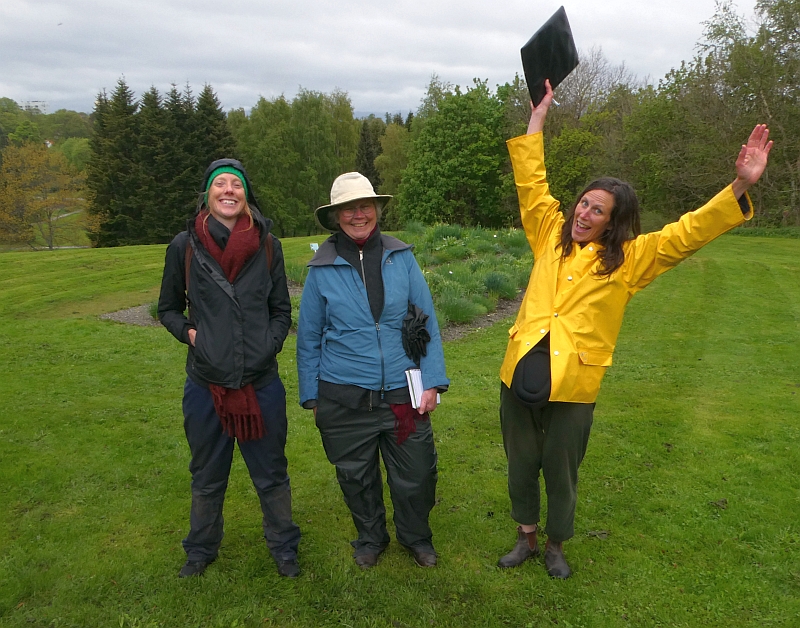


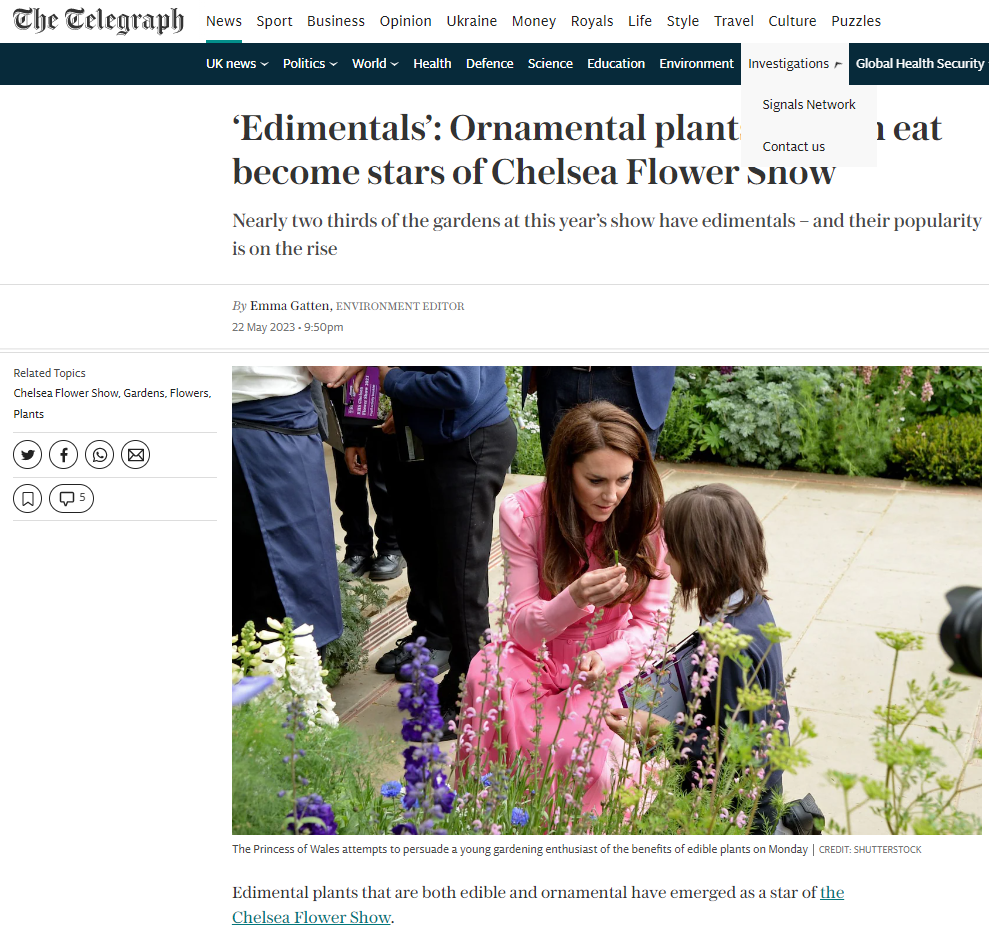

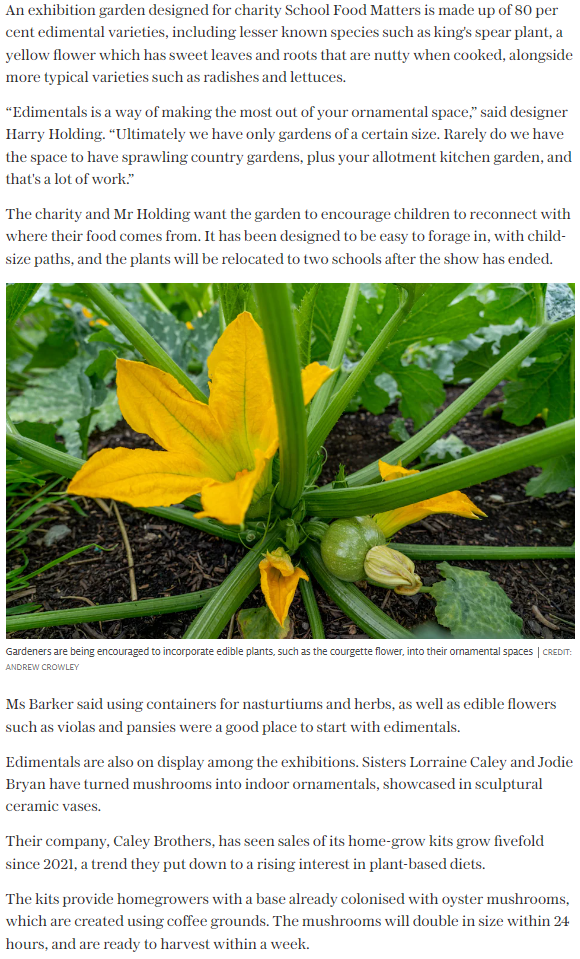
Every few years I see a shelduck (gravand) feeding in the field below the house. This one was captured on film at 6 am on 18th May 2023!
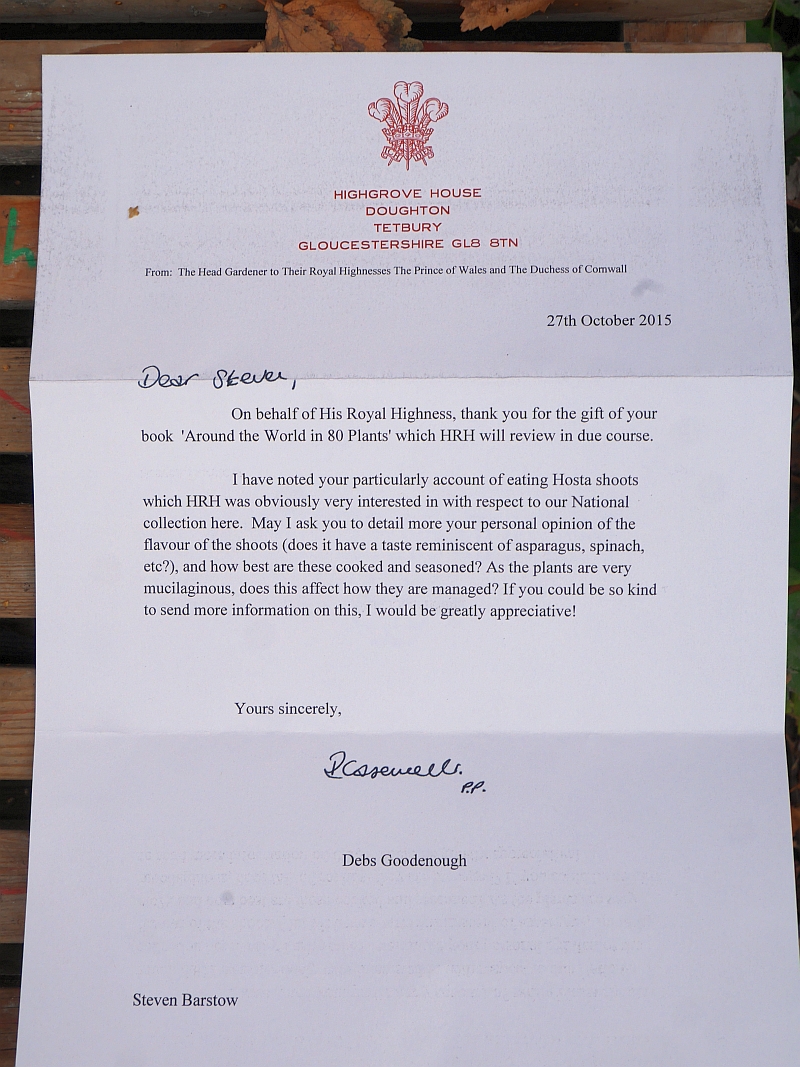
My Highgrove Hosta slide:

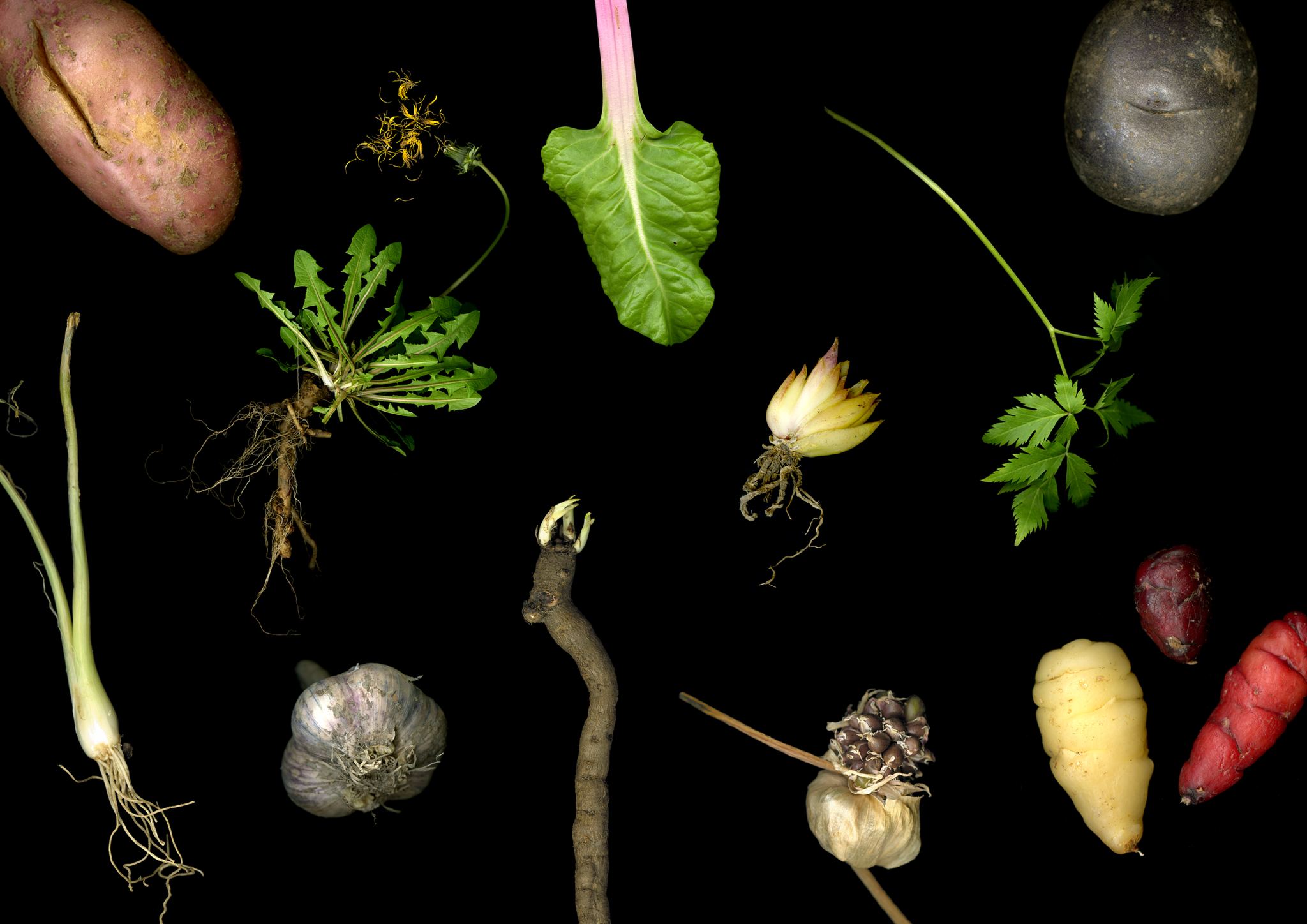
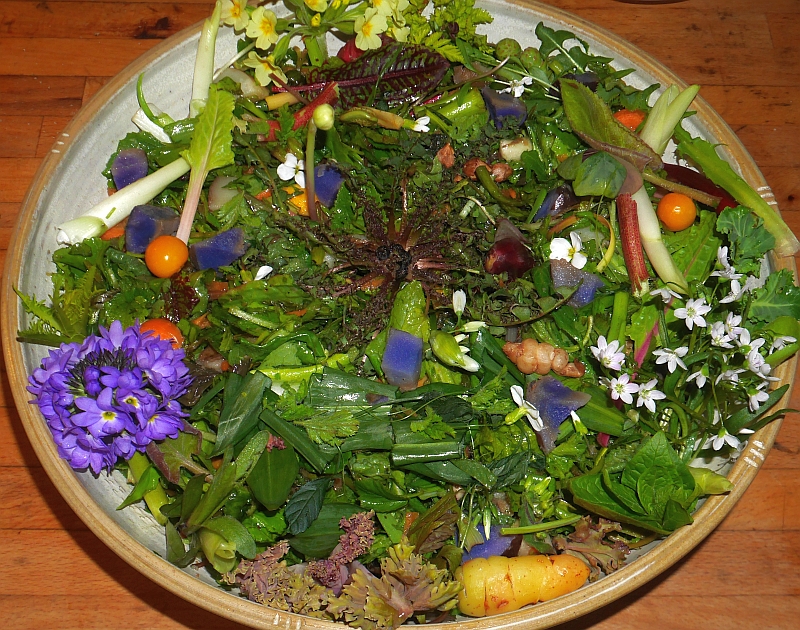
 The second salad:
The second salad: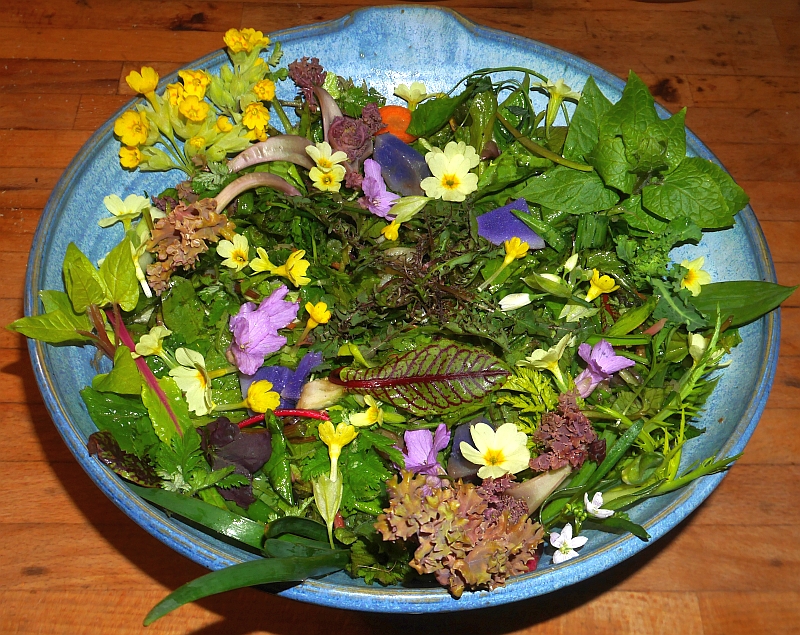
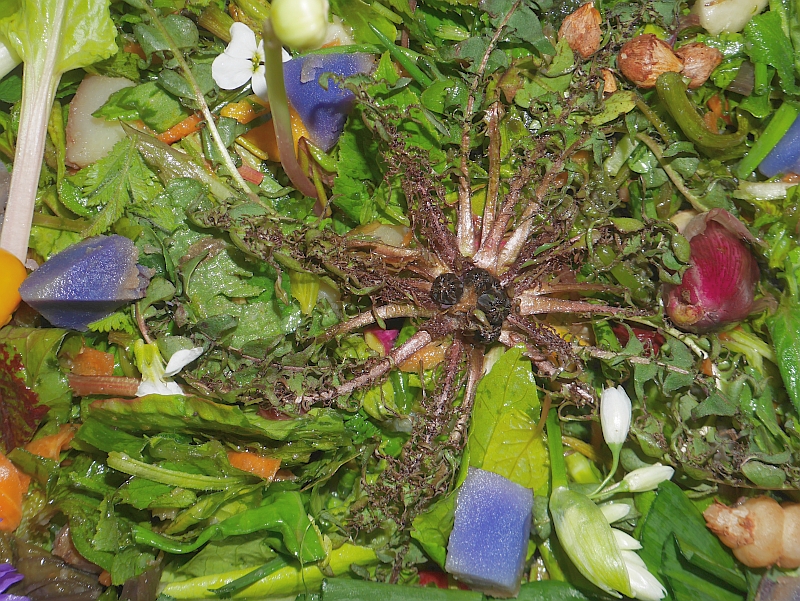
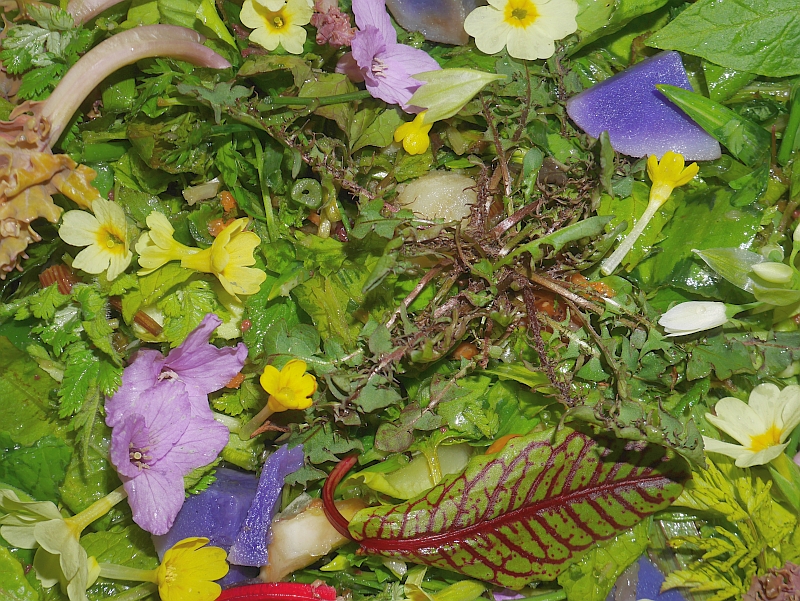
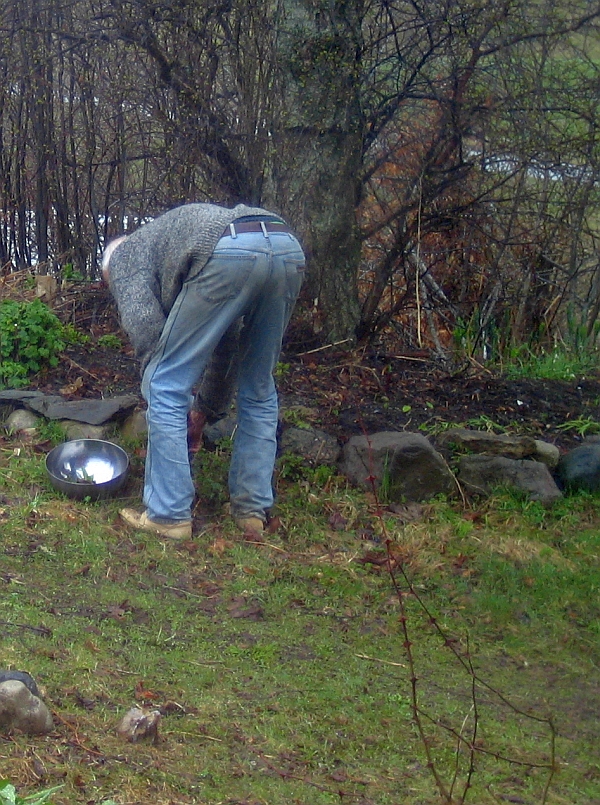


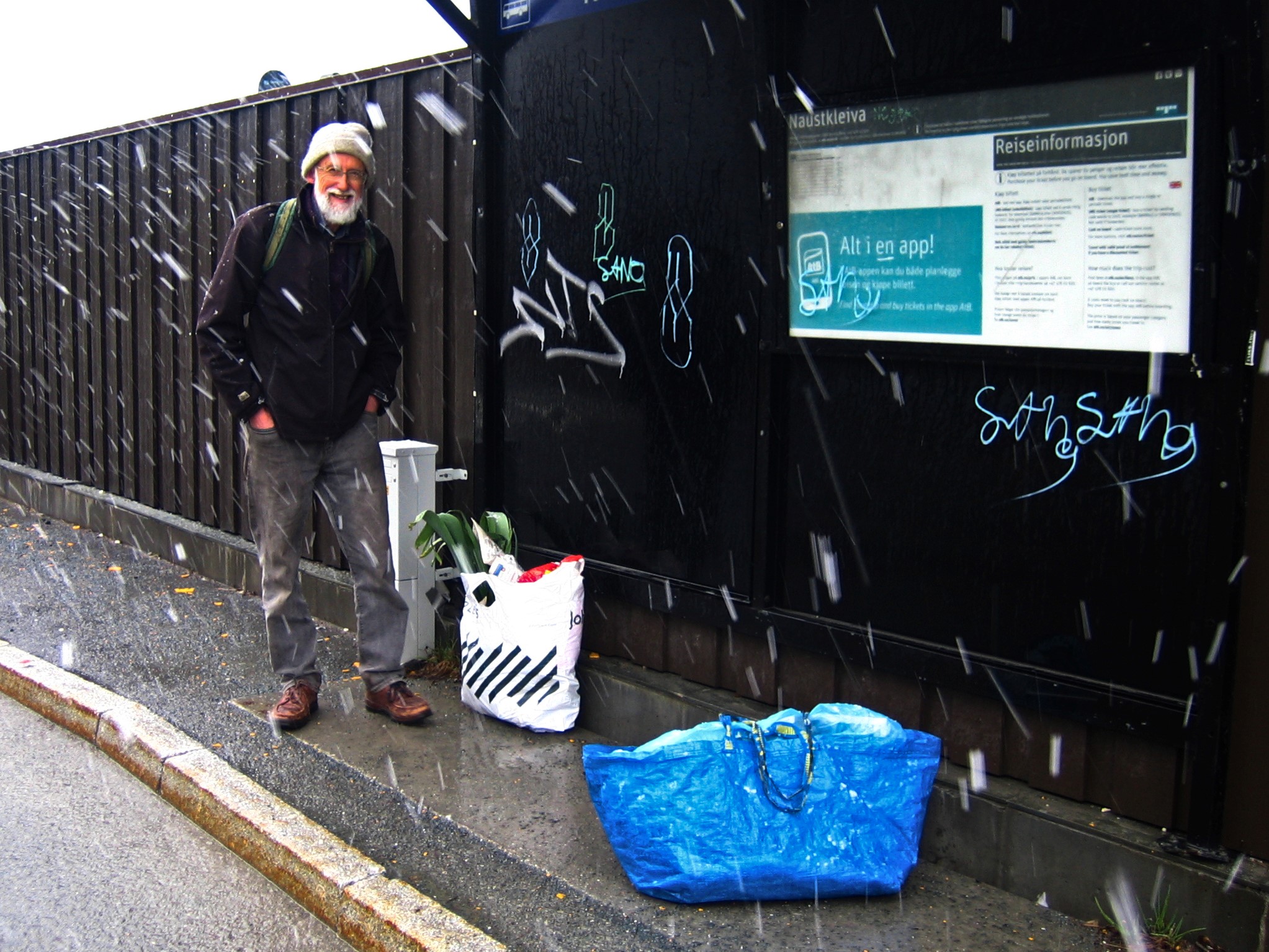
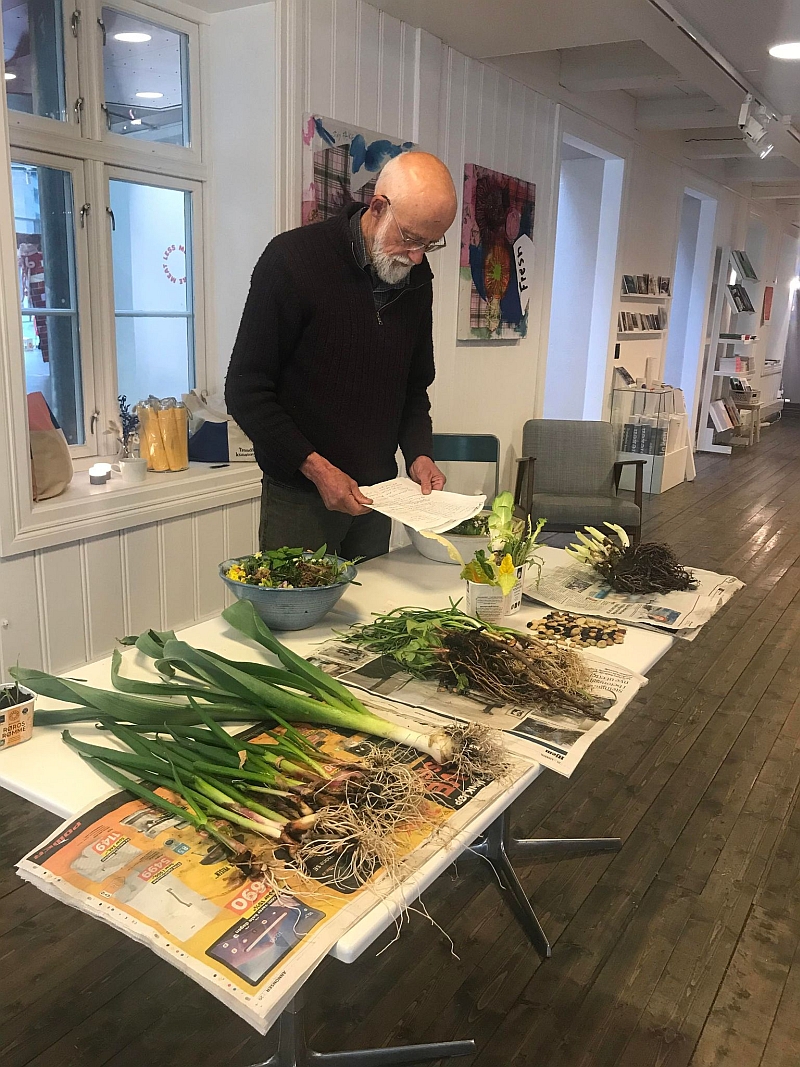
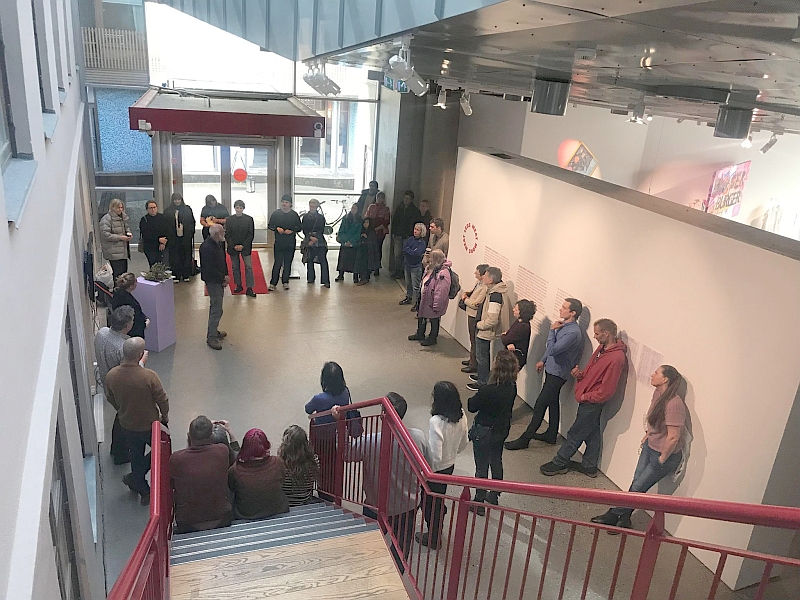
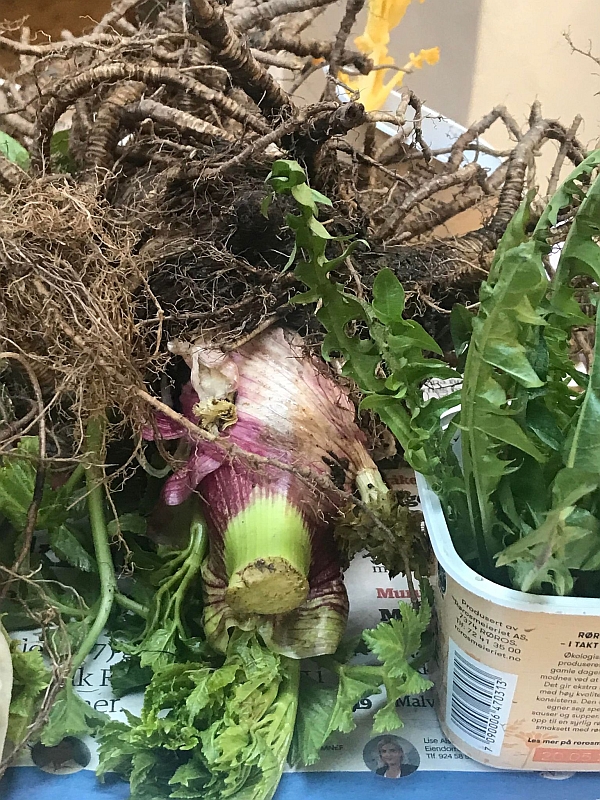
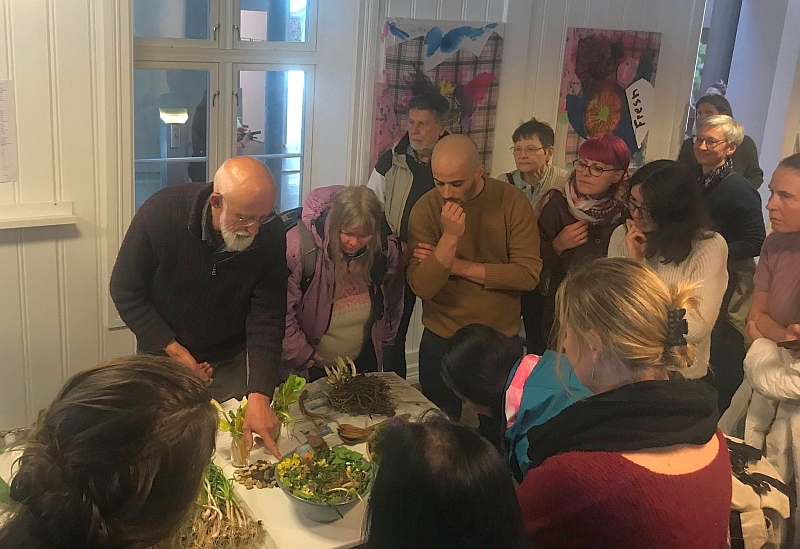

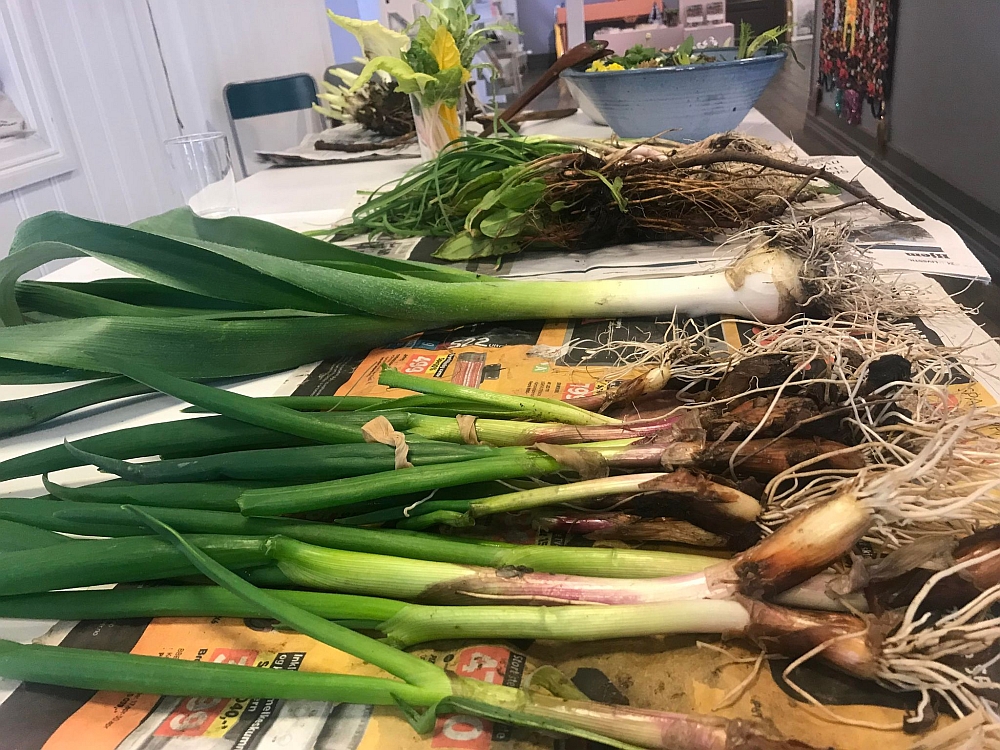



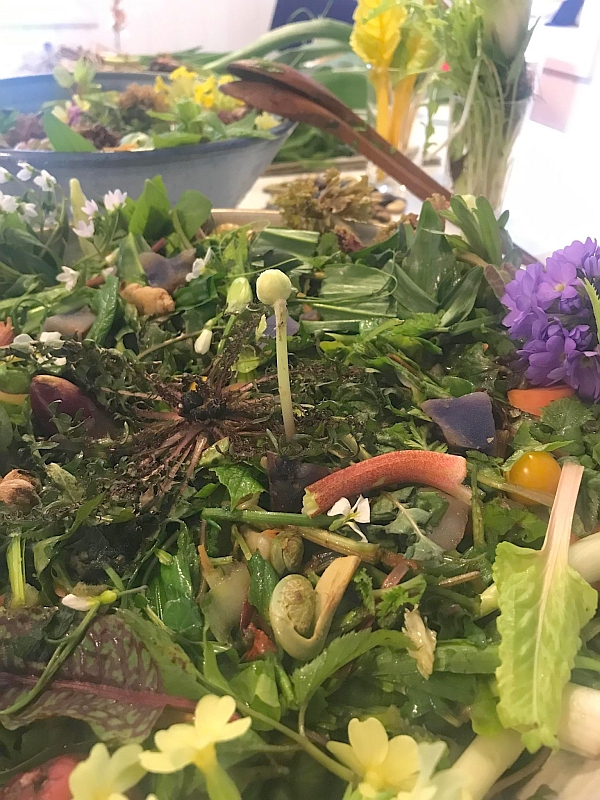
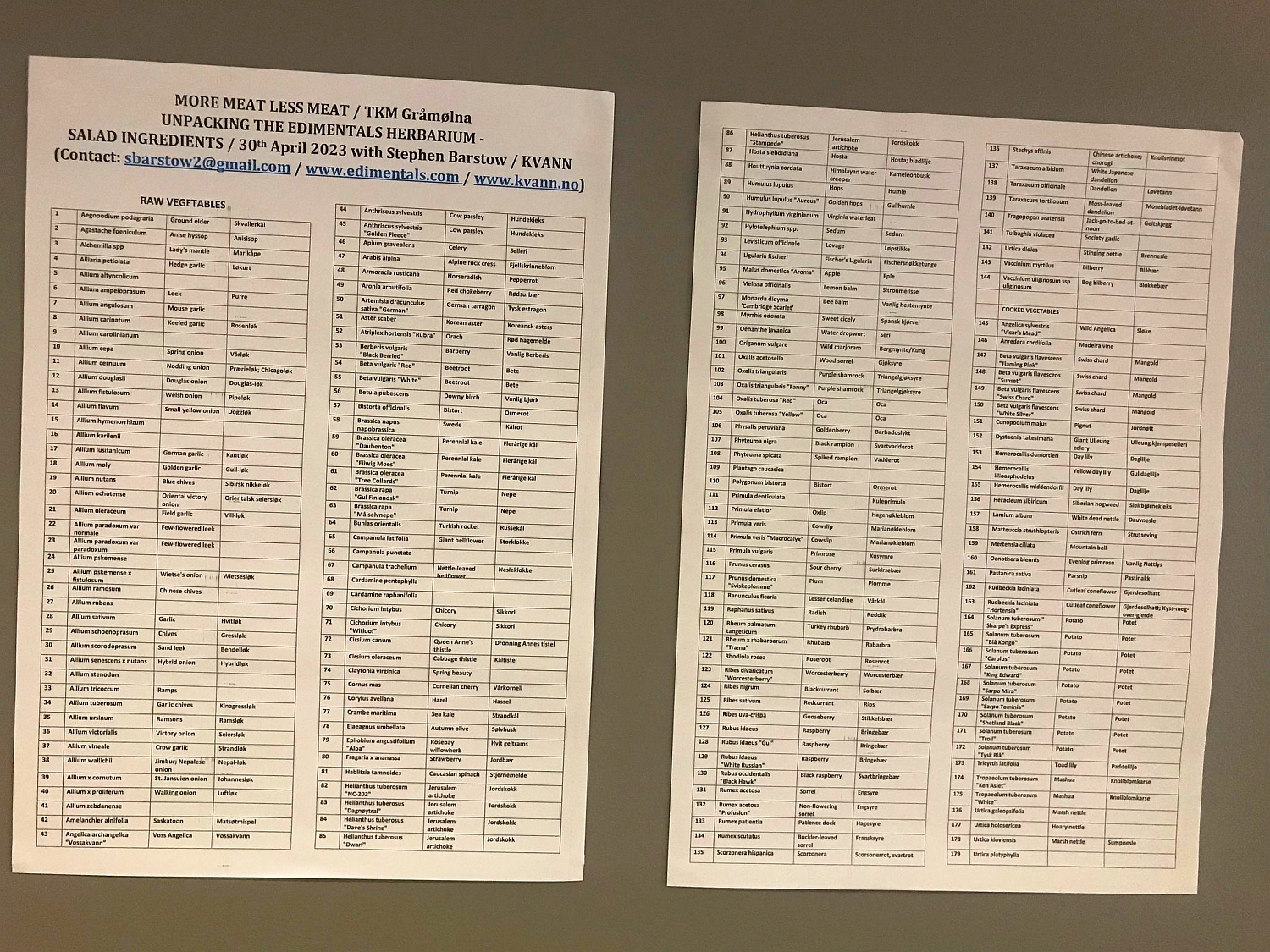
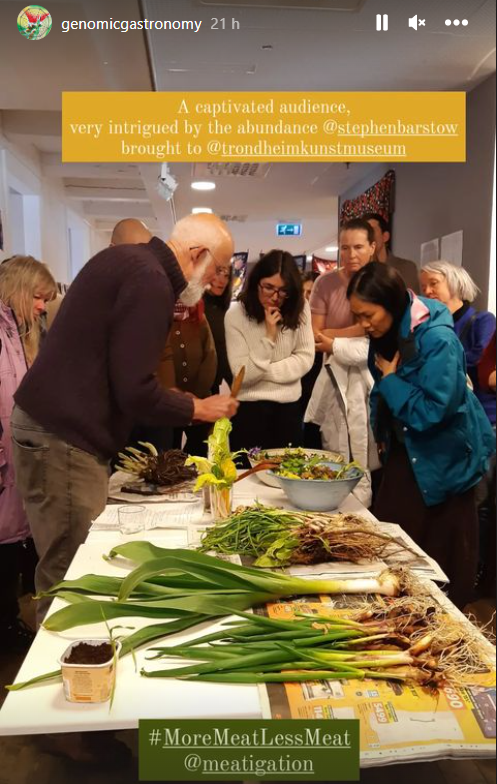
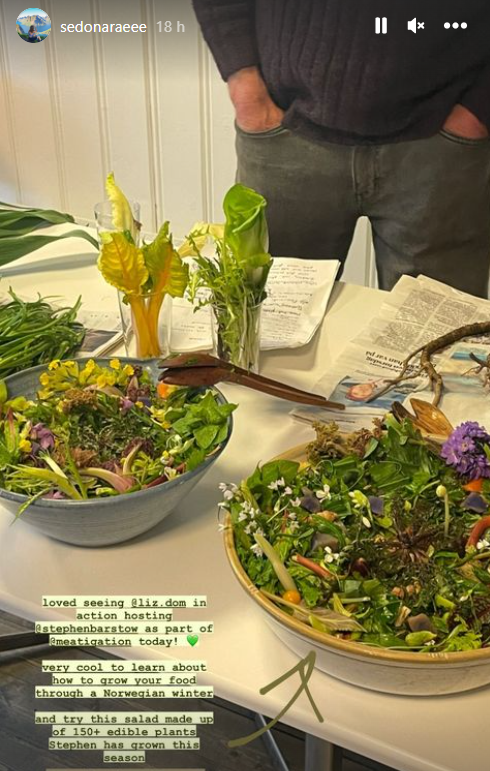
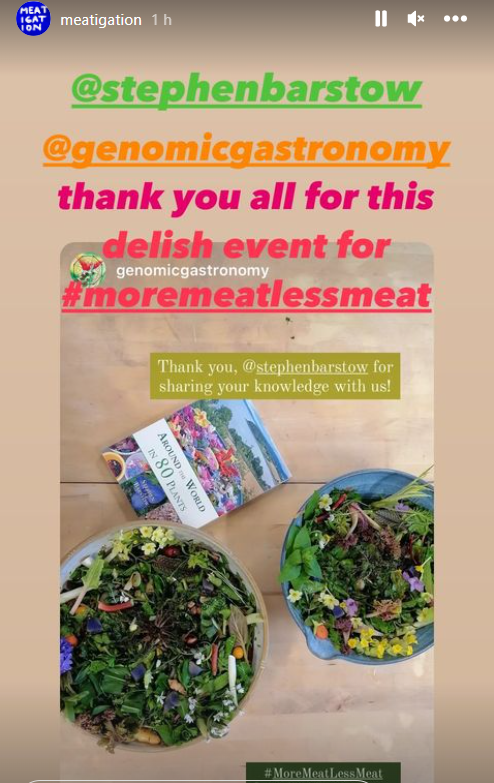
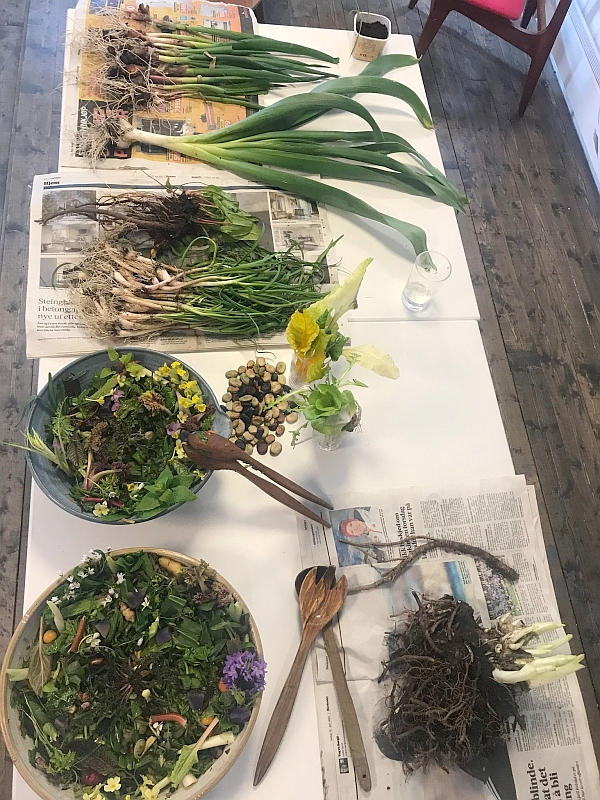
Here is the plant list:
RAW VEGETABLES
Aegopodium podagraria Ground elder Skvallerkål
Agastache foeniculum Anise hyssop Anisisop
Alchemilla spp Lady’s mantle Marikåpe
Alliaria petiolata Hedge garlic Løkurt
Allium altyncolicum
Allium ampeloprasum Leek Purre
Allium angulosum Mouse garlic
Allium carinatum Keeled garlic Rosenløk
Allium carolinianum
Allium cepa Spring onion Vårløk
Allium cernuum Nodding onion Prærieløk; Chicagoløk
Allium douglasii Douglas onion Douglas-løk
Allium fistulosum Welsh onion Pipeløk
Allium flavum Small yellow onion Doggløk
Allium hymenorrhizum
Allium karilenii
Allium lusitanicum German garlic Kantløk
Allium moly Golden garlic Gull-løk
Allium nutans Blue chives Sibirsk nikkeløk
Allium ochotense Oriental victory onion Orientalsk seiersløk
Allium oleraceum Field garlic Vill-løk
Allium paradoxum var normale Few-flowered leek
Allium paradoxum var paradoxum Few-flowered leek
Allium pskemense
Allium pskemense x fistulosum Wietse’s onion Wietsesløk
Allium ramosum Chinese chives
Allium rubens
Allium sativum Garlic Hvitløk
Allium schoenoprasum Chives Gressløk
Allium scorodoprasum Sand leek Bendelløk
Allium senescens x nutans Hybrid onion Hybridløk
Allium stenodon
Allium tricoccum Ramps
Allium tuberosum Garlic chives Kinagressløk
Allium ursinum Ramsons Ramsløk
Allium victorialis Victory onion Seiersløk
Allium vineale Crow garlic Strandløk
Allium wallichii Jimbur; Nepalese onion Nepal-løk
Allium x cornutum St. Jansuien onion Johannesløk
Allium x proliferum Walking onion Luftløk
Allium zebdanense
Amelanchier alnifolia Saskatoon Matsøtmispel
Angelica archangelica “Vossakvann” Voss Angelica Vossakvann
Anthriscus sylvestris Cow parsley Hundekjeks
Anthriscus sylvestris “Golden Fleece” Cow parsley Hundekjeks
Apium graveolens Celery Selleri
Arabis alpina Alpine rock cress Fjellskrinneblom
Armoracia rusticana Horseradish Pepperrot
Aronia arbutifolia Red chokeberry Rødsurbær
Artemisia dracunculus sativa “German” German tarragon Tysk estragon
Aster scaber Korean aster Koreansk-asters
Atriplex hortensis “Rubra” Orach Rød hagemelde
Berberis vulgaris “Black Berried” Barberry Vanlig Berberis
Beta vulgaris “Red” Beetroot Bete
Beta vulgaris “White” Beetroot Bete
Betula pubescens Downy birch Vanlig bjørk
Bistorta officinalis Bistort Ormerot
Brassica napus napobrassica “Baggens” Swede Kålrot
Brassica oleracea “Daubenton” Perennial kale Flerårige kål
Brassica oleracea “Eiiwig Moes” Perennial kale Flerårige kål
Brassica oleracea “Tree Collards” Perennial kale Flerårige kål
Brassica oleracea “Walsall Allotments” Perennial kale Flerårige kål
Brassica rapa “Gul Finlandsk” Turnip Nepe
Brassica rapa “Målselvnepe” Turnip Nepe
Bunias orientalis Turkish rocket Russekål
Campanula latifolia Giant bellflower Storklokke
Campanula punctata
Campanula trachelium Nettle-leaved bellflower Nesleklokke
Cardamine pentaphylla
Cardamine raphanifolia
Cichorium intybus Chicory Sikkori
Cichorium intybus “Witloof” Chicory Sikkori
Cirsium canum Queen Anne’s thistle Dronning Annes tistel
Cirsium oleraceum Cabbage thistle Kåltistel
Claytonia virginica Spring beauty
Cornus mas Cornelian cherry Vårkornell
Corylus avellana Hazel Hassel
Crambe maritima Sea kale Strandkål
Elaeagnus umbellata Autumn olive Sølvbusk
Epilobium angustifolium “Alba” Rosebay willowherb Hvit geitrams
Fragaria x ananassa Strawberry Jordbær
Hablitzia tamnoides Caucasian spinach Stjernemelde
Helianthus tuberosus “Dagnøytral” Jerusalem artichoke Jordskokk
Helianthus tuberosus “Dave’s Shrine” Jerusalem artichoke Jordskokk
Helianthus tuberosus “Dwarf” Jerusalem artichoke Jordskokk
Helianthus tuberosus “Stampede” Jerusalem artichoke Jordskokk
Hosta sieboldiana Hosta Hosta; bladlilje
Houttuynia cordata Himalayan water creeper Kameleonbusk
Humulus lupulus Hops Humle
Humulus lupulus “Aureus” Golden hops Gullhumle
Hydrophyllum virginianum Virginia waterleaf
Hylotelephium spp. Sedum Sedum
Lepidium sativum
Leucanthemum vulgare Ox-eye Daisy Prestekrage
Levisticum officinale Lovage Løpstikke
Ligularia fischeri Fischer’s Ligularia Fischersnøkketunge
Malus domestica “Aroma” Apple Eple
Melissa officinalis Lemon balm Sitronmelisse
Myrrhis odorata Sweet cicely Spansk kjørvel
Oenanthe javanica Water dropwort, Seri Seri
Origanum vulgare Wild marjoram Bergmynte/Kung
Oxalis acetosella Wood sorrel Gjøksyre
Oxalis triangularis Purple shamrock Triangelgjøksyre
Oxalis triangularis “Fanny” Purple shamrock Triangelgjøksyre
Oxalis tuberosa “Red” Oca Oca
Oxalis tuberosa “Yellow” Oca Oca
Physalis peruviana Goldenberry Barbadoslykt
Phyteuma nigra Black rampion Svartvadderot
Phyteuma spicata Spiked rampion Vadderot
Primula denticulata Kuleprimula
Primula elatior Oxlip Hagenøkleblom
Primula veris Cowslip Marianøkleblom
Primula veris “Macrocalyx” Cowslip Marianøkleblom
Primula vulgaris Primrose Kusymre
Prunus cerasus Sour cherry Surkirsebær
Prunus domestica “Sviskeplomme” Plum Plomme
Ranunculus ficaria Lesser celandine Vårkål
Raphanus sativus Radish Reddik
Rheum palmatum tangeticum Turkey rhubarb Prydrabarbra
Rheum x rhabarbarum “Træna” Rhubarb Rabarbra
Rhodiola rosea Roseroot Rosenrot
Ribes divaricatum “Worcesterberry” Worcesterberry Worcesterbær
Ribes nigrum Blackcurrant Solbær
Ribes sativum Redcurrant Rips
Ribes uva-crispa Gooseberry Stikkelsbær
Rubus idaeus Raspberry Bringebær
Rubus idaeus “Gul” Raspberry Bringebær
Rubus idaeus “White Russian” Raspberry Bringebær
Rubus occidentalis “Black Hawk” Black raspberry Svartbringebær
Rumex acetosa Sorrel Engsyre
Rumex acetosa “Abundance’ Non-flowering sorrel Engsyre
Rumex acetosa “Belleville’ Sorrel Engsyre
Rumex acetosa “Profusion” Non-flowering sorrel Engsyre
Rumex patientia Patience dock Hagesyre
Rumex scutatus Buckler-leaved sorrel Fransksyre
Stachys affinis Chinese artichoke; chorogi Knollsvinerot
Taraxacum albidum White Japanese dandelion
Taraxacum officinale Dandelion Løvetann
Taraxacum tortilobum Moss-leaved dandelion Mosebladet-løvetann
Tigridia pavonia Tiger flower, cacomitl
Tragopogon pratensis Jack-go-to-bed-at-noon Geitskjegg
Tropaeolum tuberosum “Ken Aslet” Mashua Knollblomkarse
Urtica dioica Stinging nettle Brennesle
Vaccinium myrtilus Bilberry Blåbær
Vaccinium uliginosum ssp uliginosum Bog bilberry Blokkebær
Scorzonera hispanica Scorzonera Scorsonerrot, svartrot
COOKED VEGETABLES
Angelica sylvestris “Vicar’s Mead” Wild Angelica Sløke
Anredera cordifolia Madeira vine
Beta vulgaris flavescens “Flaming Pink” Swiss chard Mangold
Beta vulgaris flavescens “Sunset” Swiss chard Mangold
Beta vulgaris flavescens “Swiss Chard” Swiss chard Mangold
Beta vulgaris flavescens “White Silver” Swiss chard Mangold
Conopodium majus Pignut Jordnøtt
Dystaenia takesimana Giant Ulleung celery Ulleung kjempeselleri
Hemerocallis dumortieri Day lily Daglilje
Hemerocallis lilioasphodelus Yellow day lily Gul daglilje
Hemerocallis middendorfii Day lily Daglilje
Heracleum sibiricum Siberian hogweed Sibirbjørnekjeks
Lamium album White dead nettle Dauvnesle
Matteuccia struthiopteris Ostrich fern Strutseving
Mertensia ciliata Mountain bell
Oenothera biennis Evening primrose Vanlig Nattlys
Pastanica sativa Parsnip Pastinakk
Polygonatum biflorum American Solomon’s seal Amerika-konvall
Rudbeckia laciniata Cutleaf coneflower Gjerdesolhatt
Rudbeckia laciniata “Hortensia” Cutleaf coneflower Gjerdesolhatt; Kyss-meg-over-gjerde
Sagittaria latifolia Wapato Wapato
Solanum tuberosum ” Sharpe’s Express” Potato Potet
Solanum tuberosum “Blå Kongo” Potato Potet
Solanum tuberosum “Carolus” Potato Potet
Solanum tuberosum “King Edward” Potato Potet
Solanum tuberosum “Sarpo Mira” Potato Potet
Solanum tuberosum “Sarpo Tominia” Potato Potet
Solanum tuberosum “Shetland Black” Potato Potet
Solanum tuberosum “Troll” Potato Potet
Solanum tuberosum “Tysk Blå” Potato Potet
Tricyrtis latifolia Toad lily Paddelilje
Tricyrtis spp Toad lily Paddelilje
Tropaeolum tuberosum “White” Mashua Knollblomkarse
Urtica dioica Stinging nettle Brennesle
Urtica holosericea Hoary nettle
Urtica kioviensis Marsh nettle Sumpnesle
Urtica platyphylla
LAST MINUTE ADDITIONS
Allium schoenoprasum “Black Isle Blush” Chives Gressløk
Allium validum Swamp onion; Pacific onion Stillehavsløk
Aralia cordata Udo
Barbarea vulgaris Yellow wintercress Vinterkarse
Campanula glomerata “Alba” Clustered bellflower Toppklokke
Carum carvi Caraway Karve
Coriandrum sativum Coriander Koriander
Lepidium campestre Pepperwort Markkarse
Lepidium latifolium Dittany Strandkarse
Malva alcea Hollyhock mallow Rosekattost
Melissa officinalis “Aurea” Lemon balm Sitronmelisse
Petroselinum crispum Parsley Persille
Sanguisorba minor Salad burnet Pimpernell
Sanguisorba officinalis Great burnet Legeblodtopp
Viola altaica Altai violet Altaifiol
Viola tricolor Heartsease Stemorsblomst, Natt og dag
Many thanks to Liz Dom who lead the event and project leaders Cat Kramer and Zack Denfeld and Anne Maisey from the museum, who took part remotely from Porto in Portugal at the start, for a great collaboration!
Hablitzia tamnoides (Caucasian spinach / stjernemelde) has self-sowed numerous times in my garden but only up to now on cultivated beds with naked soil. Now for the first time I noticed one had popped up in dry soil under my two oldest Norway spruce trees (Picea abies; gran) which are probably in their 80s. There are a number of Hablitzia plants in a bed about 8m above this site (I believe that the shiny seeds of Hablitzia can disperse by falling on icy snow and are blown by the wind). This is an area which had been invaded by hedge mustard / løkurt (Alliaria petiolata). I’ve been systematically removing this plant from this area and other parts of the garden where it was rapidly taking over. Incidentally, another climber, Bryonia alba, appeared in the same location in 2010, but died after a few years (last picture). It wil be interesting to see if this plant manages to establish here.
No, I don’t think Hablitzia has the potential to be invasive!
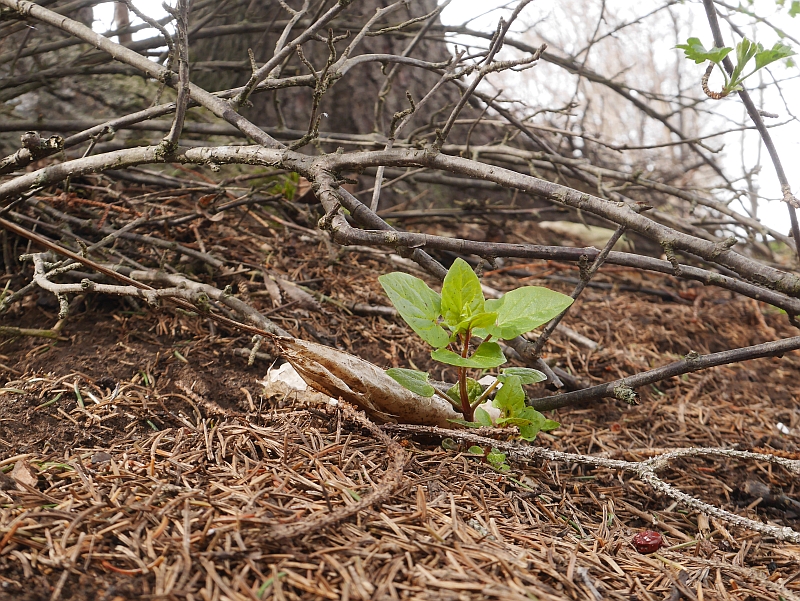
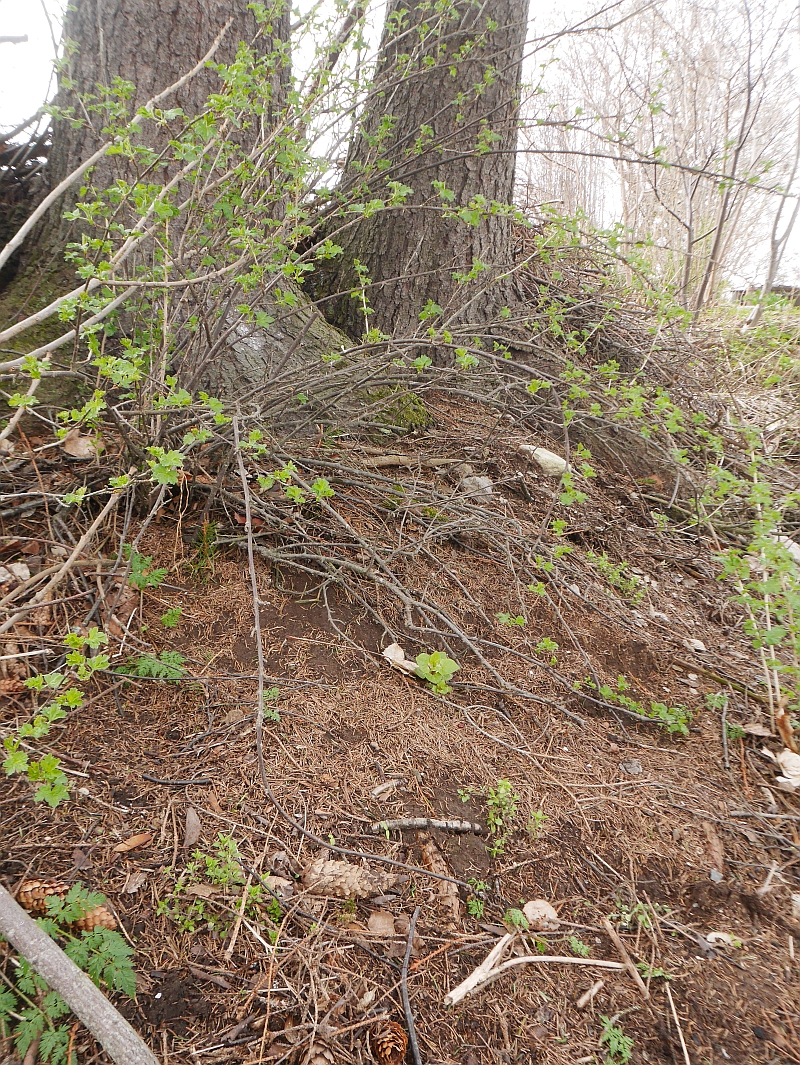
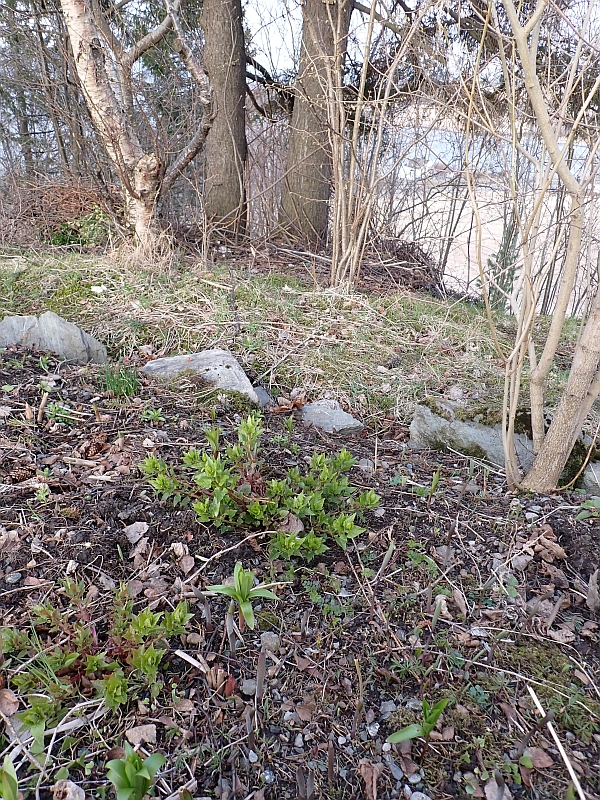
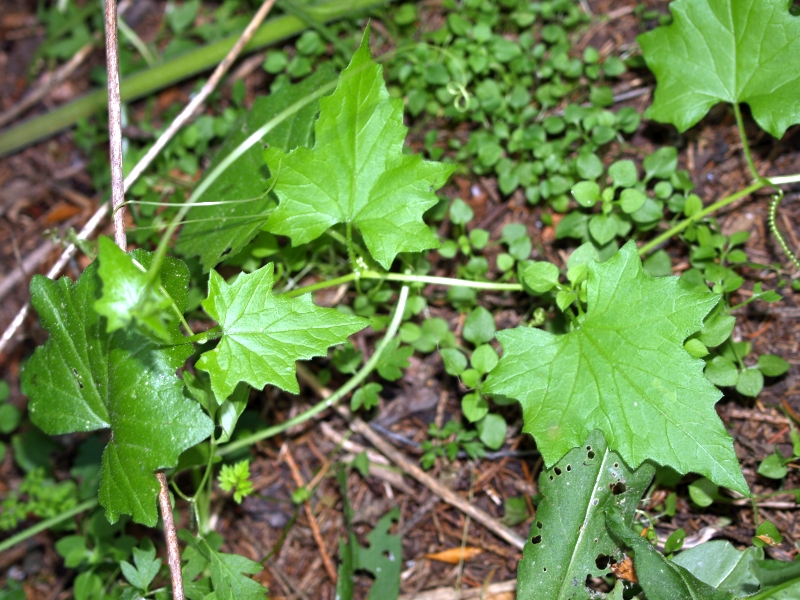
Last year’s birthday dinner was the Around the World in 80 Mac-Cheese, this year’s green mac-cheese contained 68 Hablitzia shoots, 68 ramsons (ramsløk) leaves, 68 ground elder (skvallerkål) leaves and 68 stinging nettle (brennesle) shoots, with opium poppy seeds and nutty alpine bistort (harerug) bulbils on top!
The video shows me collecting the Hablitzia shoots!